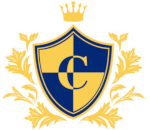Upper secondary education
3-years of Gymnasium (Gymnasieskola) are open to all pupils who have completed the nine compulsory years of schooling. Gymnasieskola is divided into 17 different national programmes, which combine compulsory and optional elements. These 17 programmes are in turn divided into 13 vocational options and 4 academic choices. There are some individual programmes designed for pupils with learning difficulties.
The 17 different programmes have eight common core subjects: English, Mathematics, General Science, Religion, Social Studies, Swedish, arts and Physical Education & Health.
The Swedish examination system is not based on a final examination but on continuous assessment throughout upper secondary education. The four grades given throughout schooling are “pass with special distinction”, “pass with distinction”, “pass” and “fail”.
Examinations can be written, oral, project assessments or a combination of the three. Students are generally allowed to use various aids during their exams, including IT.


